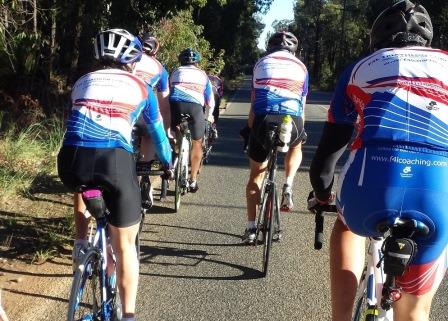Overlapping Wheels – Defensive Skill
Overlapping wheels is a part of cycling and one that you don’t want to experience. Unfortunately — it’s not always your fault. Touching, rubbing, bumping or buzzing wheels requires a defensive skill that can prevent you from hitting the pavement.
Wheel Contact
Don’t Panic
Panic is one of the main reasons that overlapping wheels causes crashes. Don’t do it. Try to remain calm and relaxed. Don’t clutch your handlebars in a death grip. Don’t fight it.
Steer Into the Offending Wheel
The Counter-Balance Maneuver
Don’t Hit Hard
The Domino Effect
If you hear the tell-tale sound of carbon or metal grinding, crashing, sliding or breaking behind you, don’t look back. This can cause overlapping wheels in front of you and a second crash is then likely. If you hear a crash behind you don’t panic. Continue on as you were. If you have concerns about the condition of riders behind you, make your intentions known, and pull over when it’s safe.
Back Cyclist’s Responsibility
Remember that, in the event of a crash, the rider in back is the responsible party, even if the rider in front causes it. For example, if the rider in front suddenly spots an obstacle that will cause him to crash, it’s their natural reaction to swerve immediately and he has every right to do so. If you have overlapped their back tire, the crash is your fault. While the rider in front of you is partially to blame for the crash, you could have avoided it had you not overlapped his back wheel. The objection here however is if they don’t hold their line an move suddenly for no reason. This erratic riding can be found more frequently at the lower levels so it is important to avoid overlapping wheels at all costs unless you have the utmost faith in the rider in front of you.
Paceline Rules
Pacelines are the major scenario regarding overlapping wheels. Depending on the experience of the riders, stay within 12-to-6 inches of the tire in front of you. Don’t make any sudden movements. Riding in close proximity takes practice and focus. It doesn’t take much to cause an overlap that results in an accident.
Ride Through It
If you feel that you might have an overlapped the wheel behind you, or that the rider is very close, don’t swerve at the last second. Your safest option is to try and ride through potholes, deep cracks etc. Swerving in a fast-moving paceline is a recipe for disaster.
Braking, Same as Swerving
Hard braking is considered a sudden, erratic movement; don’t do it. If you need to brake, slow down gradually. In most cases, sitting upright catches the attention of those behind you, and helps to catch the wind. Feather the brakes slightly and slow down.
Don’t Drift
Standing up on the pedals can cause you to drift back as your pedaling slows mid-pedal stroke. Give it some thought. When standing, try to stand the same time as you are powering the front of a pedal stroke. If you don’t, it can cause your bike to drift back a few inches or more, depending on speed, and slow down suddenly causing the rider behind you to hit or overlap your back wheel.
Groups and Pacelines
Don’t be intimidated by group riding and pacelines. Greet other cyclists with a friendly, outgoing smile. Communicate and learn hand signals and vocal warnings that might be specific to that group. If everyone follows the same signals, the chances of overlapping wheels is minimized.
Common Signals
Common group riding vocal signals are: “Car back,” and “On your left.” These two vocal warnings are used in most pacelines and group rides. Get used to shouting them. The most common hand signal is a palm out and down, or a finger pointing down, to draw attention to obstacles on either side that might cause the rider behind you to go down. Also, tapping your hip indicates that their is something, such as a parked car, on that side of the roadway and that you need to slide the opposite direction a little.
Aggressive Riders
Avoid overlaps with an awareness of your surroundings, focus, and by observing other cyclists around you. If you feel you have an overly aggressive rider behind you, find somewhere to pull over and get some distance between you and them, there’s no place for them in a group.
